Page 81 of 204

when the ignition switch is OFF however, it
can only be released when the ignition switch
is in the ON/RUN position.
NOTE:
The EPB fault lamp will illuminate if the EPB
switch is held for longer than 20 seconds if
vehicle speed is less than 1.25 mph (2 kph),
or 60 seconds if vehicle speed is greater than
1.25 mph (2 kph), in either the released or
applied position. The light will extinguish
upon releasing the switch.
The park brake will automatically engage
whenever the ignition switch is turned OFF
and the vehicle speed is below 1.25 mph
(2 km/h) via the Auto Park Brake feature.
The electric park brake will automatically
release if the engine is on and all following
conditions are met:
1. Driver's weight is detected on the driver'sseat.
2. Driver's seat is locked in forward direction (if equipped with swivel seat).
3. Transmission is in forward or reverse gears. 4. The accelerator pedal is pressed.
Or
1. Driver’s weight is detected on the driver’s
seat.
2. Driver’s seat is locked in forward direction (if equipped with swivel seat).
3. Transmission is moved from NEUTRAL to DRIVE or REVERSE gears.
4. Brake pedal is pressed.
5. Vehicle is on a slope less than 5 percent.
To release the park brake manually, the igni-
tion switch must be in the ON/RUN position.
Put your foot on the brake pedal, then push
the parking brake switch down momentarily.
Once the park brake is fully disengaged, the
BRAKE warning lamp in the instrument clus-
ter and the LED indicator on the switch will
extinguish.
If during drive away the driver pulls the EPB
switch (apply position) the drive away is
halted and EPB will be reapplied.WARNING!
To prevent SERIOUS INJURY or DEATH:
• NEVER install a driver seat cover or any other accessory on your driver seat.
• NEVER make any modifications to the
driver seat components, assembly, or
factory installed seat cover.
• NEVER place objects under the driver
seat.
If your driver seat needs service for any
reason, take your vehicle to your autho-
rized dealer immediately.
NOTE:
• When parking on a hill, it is important to turn the front wheels toward the curb on a
downhill grade and away from the curb on
an uphill grade. The parking brake should
always be applied whenever the driver is not
in the vehicle.
• The Electronic Park Brake system commu- nicates with the Driver Presence Detection
sensor installed in the driver seat. The use
of seat covers or seat accessories could
79
Page 82 of 204

prevent the Electronic Park Brake system
from working properly and result in unin-
tended vehicle movement.
WARNING!
• When leaving the vehicle, always removethe key fob from the ignition and lock
your vehicle.
• Never leave children alone in a vehicle,
or with access to an unlocked vehicle.
Allowing children to be in a vehicle un-
attended is dangerous for a number of
reasons. A child or others could be seri-
ously or fatally injured. Children should
be warned not to touch the parking
brake, brake pedal or the gear selector.
• Do not leave the key fob in or near the
vehicle, or in a location accessible to
children, and do not leave a vehicle
equipped with Keyless Enter-N-Go in
the ACC or ON/RUN mode. A child could
operate power windows, other controls,
or move the vehicle.
• Be sure the parking brake is fully disen-
gaged before driving; failure to do so can
lead to brake failure and a collision.
WARNING!
• Always fully apply the parking brakewhen leaving your vehicle, or it may roll
and cause damage or injury.
CAUTION!
If the Brake System Warning Light remains
on with the parking brake released, a brake
system malfunction is indicated. Have the
brake system serviced by an authorized
dealer immediately.
If exceptional circumstances should make it
necessary to engage the park brake while the
vehicle is in motion, a buzzer repeats until
the park brake switch is released or vehicle
speed is below 1.25 mph (2 km/h).
To disengage the park brake while the vehicle
is in motion, release the switch. If the vehicle
is brought to a complete stop using the park
brake, when the vehicle reaches approxi-
mately 1.25 mph (2 km/h) the parking brake
will remain engaged.
WARNING!
Driving the vehicle with the parking brake
engaged, or repeated use of the parking
brake to slow the vehicle may cause seri-
ous damage to the brake system. Be sure
the parking brake is fully disengaged be-
fore driving; failure to do so can lead to
brake failure and a collision.
In the unlikely event of a malfunction of the
Electric Park Brake system, a yellow triangle
EPB fault lamp will illuminate. In this status
some EPB functionality may be deactivated,
in this event, urgent service of the electric
park brake system is required. Do not rely on
the parking brake to hold the vehicle station-
ary, wheel chocks or other mechanical secur-
ing of the vehicle is required to prevent roll-
ing.
Loss Of Electric Power
If electric power is not available and the EPB
must be released for towing the vehicle, the
EPB can be mechanically released by use of
STARTING AND OPERATING
80
Page 83 of 204

an Allen wrench. EPB mechanical release
should only be performed by qualified service
personnel and only when the vehicle is se-
cured from rolling.
AUTOMATED MANUAL TRANSMISSION
— DIESEL ONLY
WARNING!
You or others could be injured if you leave
the vehicle unattended without fully ap-
plying the parking brake. The parking
brake should always be applied when the
driver is not in the vehicle.
The automated manual transmission is a con-
ventional six-speed manual transmission
with an electronically-controlled hydraulic
system that controls the clutch and gear
shifting. In forward gears, this transmission
offers two modes of operation:
• MANUAL (M) Mode — where the driver con-
trols the transmission shifting. •
Automatic Mode (the DRIVE [D] position) —
where the electronic system controls the
gear shifts.
NOTE:
In either mode, there is no clutch pedal; the
electronic system always controls the clutch
operation.
Gear Selector/Transmission Gear Position
The transmission gear selector has REVERSE
(R), NEUTRAL (N), DRIVE (D) and MANUAL
(M) positions.
In the MANUAL (M) position, the lever can be
toggled rearward or forward (+/-) to upshift or
downshift the transmission to the next gear.
With the key ON and the engine OFF the gear
selector can be moved freely from NEUTRAL
(N) to DRIVE (D) or REVERSE (R), however
the transmission will not actually shift unless
the brake pedal is pressed. Therefore, the
gear selector and the instrument cluster dis-
play may not correspond to the actual trans-
mission gear range. With the engine running
transmission shifts are allowed even if the
brake pedal is not pressed. NOTE:
• The Automated Manual Transmission must
be in NEUTRAL (N) to start the vehicle.
• The actual transmission gear range (R, N, D, 1, 2, 3, 4, 5, or 6) is displayed in the
instrument cluster display whenever the
engine is running.
• When the key is turned OFF the transmis- sion remains in its previous gear position,
regardless of the gear selector position.
• When the key is turned ON (engine off), the instrument cluster display may indicate the
gear selector position rather than the actual
transmission gear position.
To shift the transmission to a particular gear
range (with key ON/engine off), press and
hold the brake pedal, move the gear selector
to NEUTRAL (N), then move the gear selector
to the desired position.
To drive, press the brake pedal and start the
engine, then move the gear selector from
NEUTRAL (N) to the DRIVE (D) position for
automatic mode, the MANUAL (M) position
for manual mode or the REVERSE (R) posi-
tion.
81
Page 84 of 204

Only shift into DRIVE (D) or REVERSE (R)
when the accelerator pedal is released and
the vehicle is stopped. It is necessary to keep
your foot on the brake pedal when shifting
between these gears.
Gear Ranges
Do not depress the accelerator pedal when
shifting from NEUTRAL into another gear
range.NOTE:
After selecting any gear range, wait to allow
the selected gear to engage before accelerat-
ing. This is especially important when the
engine is cold.
REVERSE (R)
This range is for moving the vehicle back-
ward. Shift into REVERSE only after the ve-
hicle has come to a complete stop.
To engage REVERSE (R):
• Press and hold the brake pedal.
• Move the gear selector to the REVERSE (R)
position.
NOTE:
If the vehicle is moving, REVERSE engage-
ment will only occur if the vehicle speed is
less than 2 mph (3 km/h). Otherwise, a chime
will sound, a "Shift not allowed" message will
be displayed in the instrument cluster dis-
play, the transmission will shift to NEUTRAL,
and the REVERSE request must then be
repeated by returning the lever to NEUTRAL
then back into REVERSE once the vehicle
has come to a complete stop. • Release the brake pedal and gently press
the accelerator pedal.
NEUTRAL (N)
Use this range when the vehicle is standing
for prolonged periods with the engine run-
ning. The engine can only be started in this
range. Apply the parking brake, shift the
transmission into gear, and turn the engine
OFF if you must exit vehicle.
With the engine running, you may shift to
NEUTRAL (N) at any time if the accelerator
pedal is released. Attempting to shift to NEU-
TRAL when the accelerator pedal is de-
pressed will display a "Shift not allowed"
message in the instrument cluster display,
and will activate a continuous chime until the
gear selector is returned to its previous posi-
tion.
DRIVE (D) (Automatic Mode)
This range may be used for both city and
highway driving. The transmission will shift
gears automatically, based on vehicle speed,
engine RPM and accelerator pedal position.
There are some instances where this mode
may be necessary (climbing slippery slopes).
Gear SelectorSTARTING AND OPERATING
82
Page 85 of 204

NOTE:
Do not press the brake and accelerator pedals
at the same time. Use only one foot to operate
the brake and accelerator.
To operate in DRIVE (D) (Automatic mode):
• Press and hold the brake pedal.
• Move the gear selector to the DRIVE (D)position.
NOTE:
If the vehicle is moving, DRIVE engagement
will only occur if the vehicle speed is less
than 2 mph (3 km/h). Otherwise, a chime will
sound, the transmission will shift to NEU-
TRAL, and the DRIVE request must then be
repeated by returning the lever to NEUTRAL
and then back into DRIVE once the speed has
been sufficiently reduced.
• To drive, release the brake pedal and press the accelerator pedal.
When in DRIVE (D) the transmission will shift
gears automatically. The Automated Manual
Transmission uses a geartrain and clutch
similar to other manual transmissions. There- fore, you should become familiar with some
of the normal operational characteristics of
the Automated Manual Transmission:
• Engine torque will be interrupted briefly
during the transmission upshifts, making
these shifts more abrupt than with a typical
automatic transmission. This is normal.
• Although transmission shifting is per- formed automatically, the vehicle will not
"creep" when the brake pedal is released,
and may in fact roll down on an incline.
Leaving from a stop, the accelerator pedal
must be pressed to transmit driving torque
to the wheels.
• In Automatic Mode, the Automated Manual Transmission adapts the gear changing
strategy evaluating the road condition such
as slopes in the road.
• During low-speed driving conditions in first gear, vehicle momentum changes may feel
exaggerated in response to changes in ac-
celerator pedal position. This behavior is
normal and is similar to other vehicles
equipped with manual transmissions. • At low speeds you may hear mechanical
noises similar to a manual transmission as
the transmission changes gears. These
noises are normal and will not damage the
transmission.
• Very aggressive driving may result in some clutch odor. A warning message will display
in the instrument cluster display if cool
down actions are needed.
• Before and after the engine is started, you may hear a hydraulic pump for a short
period of time. This noise is normal and will
not damage the transmission.
During extremely cold temperatures, the
transmission will not operate if the oil tem-
perature is -22°F (-30°C) or below. Normal
operation will resume once the transmission
temperature has risen to a suitable level.
When transmission actuation oil temperature
is lower than -22°F (-30°C), engine start will
not be allowed. For this reason the block
heater is recommended below -17°F (-27°C).
83
Page 86 of 204

Manual (M) (Manual Mode)
In the MANUAL (M) position the driver is
responsible for choosing the best gear ratio to
engage, depending on driving conditions.
NOTE:
Do not press the brake and accelerator pedals
at the same time. Use only one foot to operate
the brake and accelerator.
To operate in MANUAL (M) mode:
• Press and hold the brake pedal.
• Move the gear selector to the MANUAL (M)position. The current gear will be displayed
in the instrument cluster.
• To drive, release the brake pedal and press the accelerator pedal.
• Tap the gear selector towards the (+) to engage a higher gear.
• Tap the gear selector towards the (–) posi- tion to engage a lower gear.
• The accelerator pedal need not be released during gear changes in MANUAL mode. • You can shift between DRIVE (D) and
MANUAL (M) positions at any speed, with-
out taking your foot off the accelerator
pedal.
• The system will shift down through the gears automatically (to prevent engine lug-
ging) during closed-throttle decelerations.
• The transmission will automatically down- shift to first gear when coming to a stop.
After a stop, the driver should manually
upshift (+) the transmission as the vehicle
is accelerated.
• You can start out, from a stop, in first or second gear. Tap (+) (at a stop) to select
second gear. Starting out in second gear
may be helpful in snowy or icy conditions.
• The system will ignore shift commands that would cause engine lugging or overspeed.
An audible beep will sound and a "Shift not
allowed" message will appear in the instru-
ment cluster if an inappropriate gear is
requested.
NOTE:
Avoid keeping your hand on the lever when
you are not requesting a gear shift.
When To Use TOW/HAUL Mode
When driving in hilly areas, towing a trailer,
carrying a heavy load, etc., and frequent
transmission shifting occurs, press the TOW/
HAUL switch to activate TOW/HAUL mode.
This will improve performance and reduce
the potential for transmission overheating or
failure due to excessive shifting. When oper-
ating in TOW/HAUL mode, the transmission
shift calibration is modified to accommodate
steep grades in the smoothest possible man-
ner. TOW/HAUL mode is only applicable in
the DRIVE (D) position.
Parking The Vehicle
WARNING!
You or others could be injured if you leave
the vehicle unattended without fully ap-
plying the parking brake. The parking
brake should always be applied when the
driver is not in the vehicle.
To ensure proper parking performance, it is
essential to engage MANUAL (1st) gear,
DRIVE (D) or REVERSE (R) gear while your
foot is on the brake pedal. Once MANUAL
STARTING AND OPERATING
84
Page 87 of 204

(1st) gear, DRIVE (D) or REVERSE (R) gear is
displayed in the instrument cluster display,
turn the engine off and engage the parking
brake. It is essential to wait until the gear
engaged appears in the display before turning
the engine off and releasing the brake pedal.
Always remember to apply your parking
brake.
NOTE:
NEVER leave your vehicle with the gearbox in
NEUTRAL (N) without the parking brake en-
gaged. Always remember to fully apply your
parking brake. Always remember to apply the
parking brake when the “Set Park Brake”
message is displayed.
General Warnings
• With the vehicle at a standstill and a gearengaged, keep the brake pedal pressed un-
til you decide to drive away. Then release
the brake and accelerate gradually. • When parked for long periods with the en-
gine running, it is advisable to place the
transmission in NEUTRAL (N) and apply
the parking brake.
• To avoid accelerated clutch wear, do not use the accelerator to keep the vehicle at a
standstill (for example, holding on a hill);
the clutch could be damaged by overheat-
ing. Use the brake pedal instead and oper-
ate the accelerator only when you are ready
to drive away.
• Only launch (from a stop) in second gear when you need more control on surfaces
with low traction.
• Only shift between DRIVE (D) and RE- VERSE (R) gears when the vehicle has
come to a stop and the brake pedal is
pressed. • Although very inadvisable, if the vehicle is
unexpectedly allowed to roll downhill with
the gearbox in NEUTRAL (N) the system
will automatically engage the gear best
suited to vehicle speed when a gear shift is
requested to allow drive to be correctly
transmitted to the wheels.
• If necessary, with the engine off, it is pos- sible to engage 1st, REVERSE (R) or NEU-
TRAL (N) with the key in ON/RUN/MAR
position and the brake pressed.
• During hill starts, accelerate immediately after releasing the parking brake or brake
pedal to allow the engine to increase its
rpm to a greater extent and overcome
higher gradients with more torque.
85
Page 88 of 204

Instrument Cluster Messages
Messages will be displayed in the instrument
cluster to alert the driver when certain un-
usual conditions occur. These messages are
described below.
MESSAGEDESCRIPTION
Service Transmission When the ignition key is turned to ON/RUN/MAR, the Transmission Fault Indicator light turns on and
should go off after a few seconds.
The Transmission Fault Indicator illuminates either steady or blinking (together with this message and a buzzer) to indicate a transmission fault.
Contact your authorized dealer if the message continues to appear.
Reduce Gear Changes This message indicates that the driver is operating the transmission incorrectly.
Incorrect use (by the driver) could automatically activate a procedure for protecting the system. Contact you authorized dealer if the message continues to appear.
Manual Unavailable MANUAL (M) mode is not available, due to a fault or other condition. Use the DRIVE (D) position to op-
erate the vehicle.
Contact your authorized dealer if the message continues to appear.
Automatic Unavailable Automatic (DRIVE) mode is not available due to a fault or other condition. Use MANUAL (M) mode to
operate the vehicle.
Contact your authorized dealer if the message continues to appear.
Transmission Temperature High This message appears, together with a buzzer, when the clutch overheats.
In this situation, limit stop and go driving and gear shifts or if necessary stop the vehicle and turn the engine off to allow the clutch to cool.
If the message continues to appear, contact your authorized dealer.
To avoid clutch malfunction, do not use the accelerator to keep the vehicle at a standstill (for example
holding on a hill); the clutch could be damaged by overheating. Use the brake pedal instead and operate the accelerator only when you are ready to drive away.
STARTING AND OPERATING
86
 1
1 2
2 3
3 4
4 5
5 6
6 7
7 8
8 9
9 10
10 11
11 12
12 13
13 14
14 15
15 16
16 17
17 18
18 19
19 20
20 21
21 22
22 23
23 24
24 25
25 26
26 27
27 28
28 29
29 30
30 31
31 32
32 33
33 34
34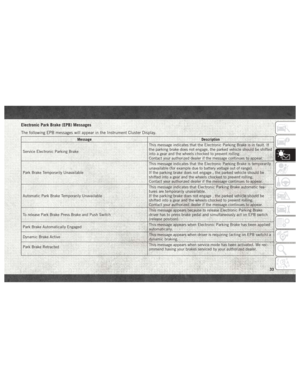 35
35 36
36 37
37 38
38 39
39 40
40 41
41 42
42 43
43 44
44 45
45 46
46 47
47 48
48 49
49 50
50 51
51 52
52 53
53 54
54 55
55 56
56 57
57 58
58 59
59 60
60 61
61 62
62 63
63 64
64 65
65 66
66 67
67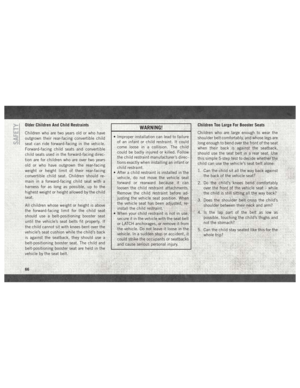 68
68 69
69 70
70 71
71 72
72 73
73 74
74 75
75 76
76 77
77 78
78 79
79 80
80 81
81 82
82 83
83 84
84 85
85 86
86 87
87 88
88 89
89 90
90 91
91 92
92 93
93 94
94 95
95 96
96 97
97 98
98 99
99 100
100 101
101 102
102 103
103 104
104 105
105 106
106 107
107 108
108 109
109 110
110 111
111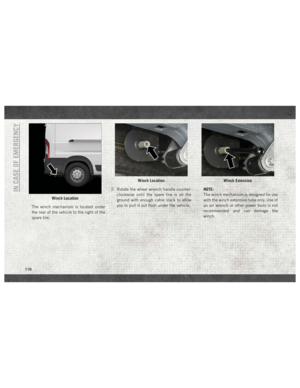 112
112 113
113 114
114 115
115 116
116 117
117 118
118 119
119 120
120 121
121 122
122 123
123 124
124 125
125 126
126 127
127 128
128 129
129 130
130 131
131 132
132 133
133 134
134 135
135 136
136 137
137 138
138 139
139 140
140 141
141 142
142 143
143 144
144 145
145 146
146 147
147 148
148 149
149 150
150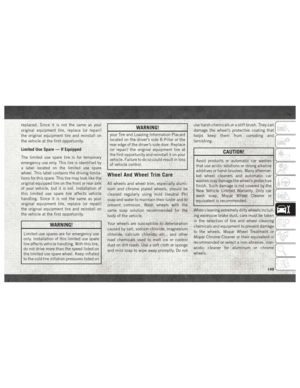 151
151 152
152 153
153 154
154 155
155 156
156 157
157 158
158 159
159 160
160 161
161 162
162 163
163 164
164 165
165 166
166 167
167 168
168 169
169 170
170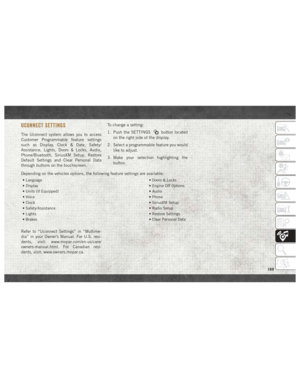 171
171 172
172 173
173 174
174 175
175 176
176 177
177 178
178 179
179 180
180 181
181 182
182 183
183 184
184 185
185 186
186 187
187 188
188 189
189 190
190 191
191 192
192 193
193 194
194 195
195 196
196 197
197 198
198 199
199 200
200 201
201 202
202 203
203






